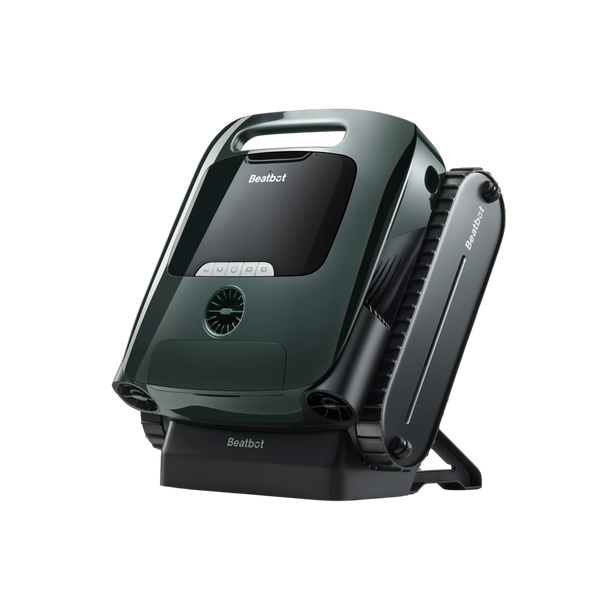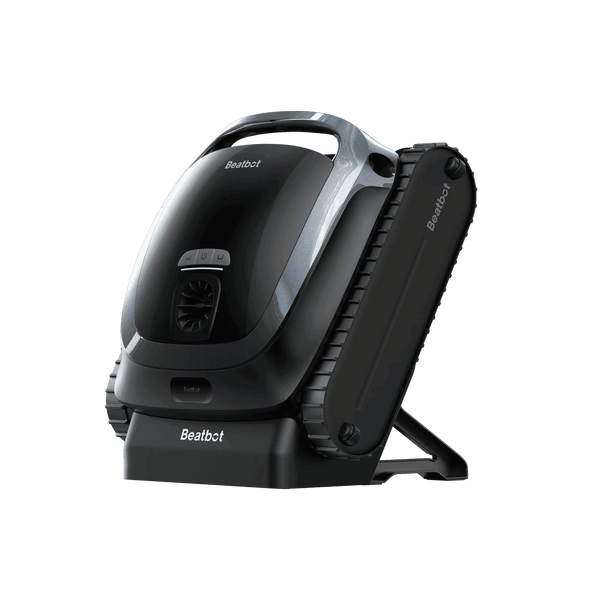Chlorine Balance: Determining the Right Free Chlorine Levels for Your Pool
Cloudy water? Red eyes? Frustrated with constant chlorine adjustments? You've landed in the right place. Let's tackle chlorine balance head-on and get your pool sparkling clean – without the confusion.
Table of content

Why Chlorine Balance Makes or Breaks Your Pool
The Protection Factor
Your pool needs chlorine to zap bacteria and algae. But throw in too much or too little, and you're asking for trouble. Perfect balance keeps your water safe and swimmers happy.
Equipment Life
Pool equipment costs big bucks. The right chlorine levels protect your investment. Pumps run smoother, filters last longer, and pool surfaces stay pristine when chlorine stays balanced.
The Real Cost
Unbalanced chlorine wastes money. You'll burn through chemicals faster, replace equipment sooner, and possibly face expensive repairs. Getting it right the first time saves cash in the long run.
Issues with High Chlorine Levels:
- Excessive Chlorine: High chlorine in your pool usually indicates an over-application of chlorine to the water. This can occur if you've added too many chlorine tablets or recently shocked your pool. It can also happen if you've added too much chlorine following the application of a chlorine stabilizer. Chlorine stabilizers, such as cyanuric acid or CYA, slow down the sun's depletion of chlorine. High chlorine levels can be detrimental to swimmers, particularly affecting their lungs, skin, and eyes, and can also damage pool surfaces like vinyl liners.
Problems with Low Chlorine Levels:
- Insufficient Chlorine: Chlorine levels at or below 1 PPM mean your pool water is not properly sanitized, which can result in algae growth and bacterial accumulation. If your free chlorine is too low and your combined chlorine (chloramines) is high, you may notice a chlorine-like smell and skin and eye irritation.
Finding Your Pool's Sweet Spot
The Magic Numbers
Aim for 1-3 parts per million (ppm) of free chlorine. This range keeps water clean without going overboard. Test regularly – your numbers tell the story of your pool's health.
What Affects Your Levels
UV rays eat chlorine for breakfast. Rain dilutes it. Swimmers use it up. Each factor changes how much chlorine your pool needs. Know these players, and you'll master the balance game.
Location Matters
Desert pools face different challenges than mountain ones. Your local climate shapes your chlorine needs. Hot areas need more frequent checks, while cooler spots might need less attention.
Spot the Signs Before Trouble Hits
Red flags pop up before your pool turns green. Catch them early and save yourself a headache.That strong "chlorine smell" isn't what you think. When your nose picks up a harsh chemical scent, your pool actually needs more chlorine, not less. The smell comes from chloramines – they're the troublemakers, not the good guys.Keep watch for cloudy water or a sudden change in color. Clear water means happy swimmers. If you can't see the drain at the deep end, grab your test kit pronto.Want crystal clear water? Watch how it sparkles – or doesn't. Healthy pools shimmer. Dull, flat-looking water needs attention.
Master Your Testing Game
Skip the guesswork. Testing your water unlocks pool care mysteries and keeps your chemical costs down.Pick your weapon: strips or drops. Test strips work fast but liquid kits give you the whole story. Whichever you choose, stick with it. Mixing methods messes with your readings.Dip into the deep end, away from returns and skimmers. Wait 30 seconds – seriously, count it out. Rush the test, and you'll get bogus numbers.
Balance Like a Boss
Miss these key steps and your chlorine won't work right:Check pH first. When pH goes wonky, chlorine gets lazy. Keep it between 7.2 and 7.6 for maximum punch.Add chlorine when the sun sleeps. Daylight eats chlorine for breakfast. Evening doses last longer and work harder.Run your filter. Moving water keeps chlorine working. Dead spots breed trouble.Test, tweak, repeat. Each pool develops its own personality. Learn yours by keeping notes on what works.
Keep It Balanced Year-Round
Smart pool owners adapt their chlorine strategy for every season. Winter doesn't mean you can slack off – it just means different rules.Drop your sanitizer levels when temperatures fall. Cold water needs less chlorine to stay clean. But don't skip testing. A balanced pool in winter means an easier opening in spring.Hot summers demand more attention. Check levels twice weekly when the mercury soars. UV rays blast through chlorine faster than you think.
Common Myths About Chlorine
"More chlorine means cleaner water." Wrong. Dumping extra chlorine into your pool wastes money and irritates swimmers. Proper balance beats brute force every time.Someone told you that chlorine turns eyes red? Another myth. Irritated eyes come from poor pH balance, not chlorine itself. Fix your pH, and watch those complaints disappear."Salt pools don't need chlorine." False. Salt systems actually create chlorine – they just do it differently. You still need to monitor and maintain proper levels.

Critical Times to Check Levels
After Heavy Use
Big pool parties demand quick action. Test within 24 hours after heavy swimming. Your sanitizer levels drop faster than you think when dozens of swimmers jump in.
Weather Changes
Storms mess with your chemistry. Rain dilutes. Sun burns off chlorine. Wind dumps debris. Each weather event needs a quick check and adjust.
Equipment Changes
New pump? Different filter? Fresh water? Any change to your pool system affects chlorine efficiency. Monitor closely for two weeks after equipment updates.
Advanced Pool Care
Cyanuric acid shields your chlorine from sun damage. Too little means wasted chlorine. Too much makes your sanitizer lazy. Check stabilizer levels monthly.Know the pressure points of pool chemistry. Total alkalinity guards your pH. Metals can stain. Phosphates feed algae. Each element connects to your chlorine's performance.Monitor total dissolved solids (TDS). High TDS makes your chemicals work harder and costs you more money. Sometimes you need to drain and refill – it's just part of smart pool care.
Pro Tips for Success
Raising Your Chlorine Levels:
- Regular Chlorine Addition: Ensure you are consistently adding enough chlorine to your pool, including checking your chlorinator, saltwater generator, and other methods of chlorine distribution. Then, test and adjust your cyanuric acid levels.
- Cyanuric Acid Levels: If your CYA levels are too low or too high, it can hinder the effectiveness of your chlorine. However, if your chlorine levels remain low even after regular addition, consider shocking your pool with a chlorine-based shock treatment to increase free chlorine levels and break down combined chlorine.
- Persistent Low Chlorine: If your chlorine levels stay low after shocking, you may be dealing with a high chlorine demand issue. Consult the troubleshooting section for further assistance.
Lowering Your Chlorine Levels:
- Ceasing Additional Chlorine: Make sure to stop adding extra chlorine to your water while trying to reduce levels. Allow the sun to deplete some of the chlorine or dilute your pool with fresh water.
- Proper pH Levels: Remember that maintaining proper pH levels is crucial for effective chlorine function, so adjust the pH before altering the chlorine levels.
- Chlorine Neutralizer: For a faster solution, consider using a chlorine neutralizer, which is one of the quickest ways to reduce chlorine levels. However, be cautious not to overdo it, as this can significantly lower your pH. Start with small amounts.

The Bottom Line
Perfect chlorine balance takes practice. Start with the basics:
- Test weekly, no excuses
- Adjust in small doses
- Keep your filter running
- Watch the weather
Your pool tells you what it needs. Learn its language through regular testing and careful observation. Clear water isn't an accident – it's the result of consistent care and attention to detail.
Your Action Steps
- Get a reliable test kit
- Set a weekly testing schedule
- Keep chemical readings in a log
- Watch for changes in water clarity
- Maintain proper filtration
A healthy pool means more fun and fewer headaches. Take control of your chlorine levels now, and enjoy stress-free swimming all season long.
Relative Blogs
About the author



















